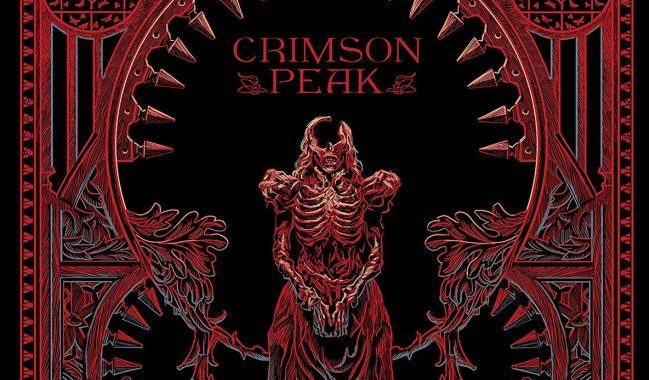
Crimson Peak (2015) Blu-ray Review
 Gothic horror has had a long tradition going back to the 18th century in literature beginning with Horace Walpole’s ‘The Castle of Otranto’ (1764) and continuing through the 19th century with Romanticism, especially in England and of course in Germany with paintings by the likes of Caspar David Friedrich and Henry Fuseli going on through to Symbolism. Most importantly in literature there was Mary Shelley’s ‘Frankenstein’ (1818) with the gothic further evident in the works of Charles Dickens (‘A Christmas Carol’ and other short stories, 1843) before it found its high point with Bram Stoker’s ‘Dracula’ (1897) and Sheridan la Fanu’s ‘Carmilla’. Of course the other giant of a name in the story of gothic fiction was from America with Edgar Allan Poe.
Gothic horror has had a long tradition going back to the 18th century in literature beginning with Horace Walpole’s ‘The Castle of Otranto’ (1764) and continuing through the 19th century with Romanticism, especially in England and of course in Germany with paintings by the likes of Caspar David Friedrich and Henry Fuseli going on through to Symbolism. Most importantly in literature there was Mary Shelley’s ‘Frankenstein’ (1818) with the gothic further evident in the works of Charles Dickens (‘A Christmas Carol’ and other short stories, 1843) before it found its high point with Bram Stoker’s ‘Dracula’ (1897) and Sheridan la Fanu’s ‘Carmilla’. Of course the other giant of a name in the story of gothic fiction was from America with Edgar Allan Poe.
Arrow Video’s fantastic and complete packaged limited edition presentation of Crimson Peak (2015) in High Definition Blu-ray (1080p) is a fine addition to the ongoing collection of Guillermo Del Toro’s work. Del Toro, a director that has become synonymous with a new kind of horror cinema. It has all the ghostly scares of an M.R. James or Poe novel and, like its predecessors, is set in the 19th century. More precisely, Buffalo, New York in 1901. The story has an American heiress, Edith Cushing (no, no relation to Peter, at least I don’t think so) (Mia Wasikowska). She is the daughter of a wealthy businessman (Jim Beaver) who has been approached by Englishman, Sir Thomas Sharpe (Tom Hiddleston) and his sister, Lucille (Jessica Chastain) who wants Cushing to invest in his clay mining invention for his estate in England. Cushing belittles Sharpe and is later found with his face smashed in a toilet.
Meanwhile, Edith had been wooed and courted by Sharpe, much to her father’s chagrin. For many years Edith has also been receiving horrific apparitions of her supposed long dead mother who has been warning her of Crimson Peak. She marries Sharpe and moves to England with him and his possessive (and incestuous) sister who shows outward passive aggressiveness to Edith. Some horrific and threatening red ghosts begin to haunt and terrify Edith, almost driving her to madness. She soon starts to suspect that she is being poisoned and that Allerdale Hall holds a very dark past.

What made Jack Clayton’s adaptation of Henry James’s ‘The Turn of the Screw’, The Innocents (1961) so effective was it’s subtlety. One of the aspects of Del Toro’s film that lets it down is it’s lack of subtlety. It hardly seems necessary that the spectres of ghosts are vivid rotting demons when something much more eerie and unseen could serve better as was shown with The Woman in Black (2012). The clay around Allerdale Hall too is bright blood red rather than a darker brick red. Nevertheless, Del Toro is also drawing on cinema’s great journey through the gothic beyond Hammer and more towards the vivid and strong colours of Mario Bava’s films and the Roger Corman cycle of Edgar Allan Poe adaptations in the 1960s. From the costumes to the production design of the hall, Del Toro has turned to an exaggerated gothic and has even drawn on some of the classic Hollywood gothic melodramas such as Hitchcock’s adaptation of Daphne Du Maurier’s Rebecca (1940) and Dragonwyck (1946).
The disc is peppered with many wonderful extras that cover mini and lengthier featurettes on the making of the film, but best of all a wonderful visual essay by Kat Ellinger putting this film into context with the tradition of other gothic horror films and romantic melodramas and a talk on the film by Kim Newman. This release should lift Crimson Tide up among and in the continuity with other gothic horrors: The Devil’s Backbone (2001), Pan’s Labyrinth (2006) and The Shape of Water (2017).
Chris Hick
(2017).
